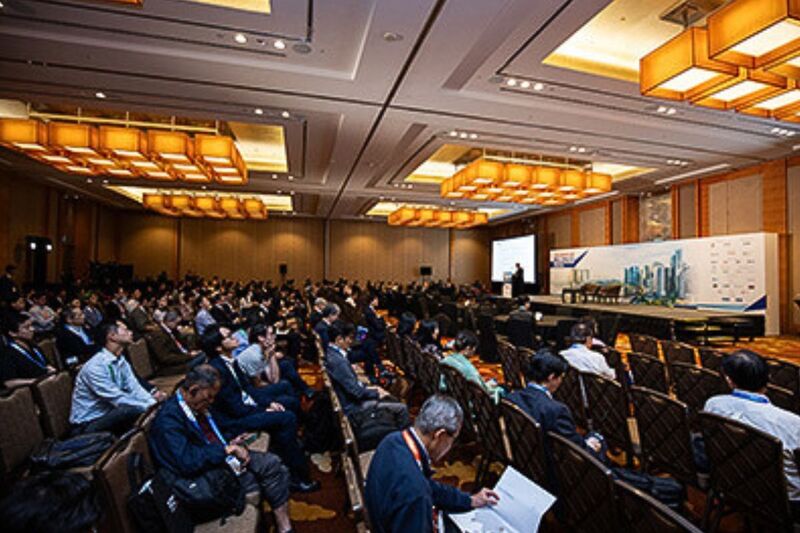Why Bilingual Leadership Will Define Singapore’s Regional Success in 2026

This article is written in English for readers in Singapore. Chinese and Japanese translations are available on our website.
Introduction: Bilingual Leadership Is Becoming a Strategic Advantage
As Singapore strengthens its role as a regional HQ hub, the expectations placed on leadership teams have evolved. Companies today operate across Singapore, Malaysia, Thailand, Vietnam, Indonesia, Japan, and beyond — each with different cultural norms, business expectations, communication styles, and market maturity.
This means that one capability has quietly become one of the most valuable leadership assets in 2026:
Bilingual & bicultural leadership.
Not just language skill — but the ability to bridge cultures, align regional teams quickly, work with overseas headquarters, and adapt communication to diverse stakeholders.
Insights from the APAC Workforce Whitepaper 2025, Reeracoen’s leadership placement data, and the Singapore Salary Guide 2025/2026 show that bilingual leaders outperform in:
- Decision-making
- Team alignment
- Stakeholder management
- Regional market expansion
- Cross-border collaboration
This article explains why bilingual leadership matters, the shortage companies face, and how Singapore businesses can build stronger bilingual pipelines.
1. Bilingual Leadership Improves Cross-Border Decision Speed
ASEAN is fast, diverse, and relationship-driven. Many Singapore companies coordinate daily with teams in Vietnam, Malaysia, Thailand, Japan, China, and Korea.
In these contexts, bilingual or bicultural leaders achieve better outcomes because they can:
- Reduce misunderstandings
- Translate both words and intent
- Influence without relying on seniority
- Establish trust faster
- Shorten misalignment cycles with regional HQs
Reeracoen’s placements show that companies with bilingual middle and senior managers report:
- 35% shorter project alignment timelines
- Better stakeholder confidence
- Faster conflict resolution
- Higher retention in regional teams
In an economy where speed is a competitive advantage, communication clarity becomes a leadership multiplier.
2. The Bilingual Talent Shortage in ASEAN Is Real
Reeracoen’s databases and market insights indicate:
- Only 12–15% of ASEAN’s professional workforce is bilingual at a business level
- Among this group, only a fraction have managerial or director-level experience
- Companies increasingly require bilingual talent to liaise with Japan, Korea, China, or regional HQs
- Singapore sees a 30% year-on-year increase in demand for bilingual managers
This shortage limits regional expansion and slows communication between HQ and local markets.
For Singapore companies planning to grow across Southeast Asia, bilingual leadership is no longer optional — it is a strategic requirement.
3. Why Bilingual Leaders Drive Better Business Outcomes
Companies with strong bilingual leadership models commonly report:
✔ Higher productivity
Teams collaborate more smoothly across borders.
✔ Stronger relationships with regional partners
Understanding local norms helps avoid misunderstandings.
✔ More effective stakeholder management
Leaders can interpret tone, nuance, and expectations from different cultures.
✔ Better team morale and lower turnover
Employees feel understood and supported.
✔ Faster alignment between HQ and local markets
Critical for Japanese, Korean, and European MNCs with regional hubs in Singapore.
Across multiple industries — manufacturing, fintech, engineering, technology, FMCG, and logistics — bilingual leaders consistently outperform because they bring both communication clarity and cultural intelligence.
4. How Singapore Companies Can Build Stronger Bilingual Pipelines
a) Hire early and promote from within
Internal hires already understand the company’s culture, which reduces onboarding and adjustment time.
b) Invest in structured language development
Language training tied to KPIs reflects strategic commitment.
c) Rotate high-potential talent across ASEAN
Short-term assignments between Singapore, Vietnam, Malaysia, and Thailand accelerate cultural fluency.
d) Use bilingual leaders as mentors
Pair rising stars with experienced bilingual managers for shadowing and leadership coaching.
e) Broaden hiring criteria beyond native speakers
Prioritise communication effectiveness, not accent or grammar perfection.
f) Build leadership pathways with cross-market exposure
This creates stronger succession pipelines for GM, Director, and country leadership roles.
Companies that invest in bilingual development report higher retention and more cohesive regional teams.
5. Case Snapshots from Reeracoen’s Leadership Search Experience

🟦 Case 1: Regional Manufacturing MNC
Challenge: Slow alignment between ASEAN teams and overseas HQ.
Outcome after hiring bilingual HR & compliance leaders:
- 35% reduction in time-to-decision
- Improved communication flow with HQ
- Higher employee confidence in leadership

🟦 Case 2: Singapore HQ with Japan–ASEAN operations
Challenge: Cultural gaps between Singapore leaders and Japan headquarters.
Outcome:
- Built a bilingual leadership rotation model
- Improved stakeholder communication
- Stronger succession planning for ASEAN growth

🟦 Case 3: Consumer Brand Expanding Across SEA
Challenge: New market expansion required regionally fluent leadership.
Outcome:
- Appointed a bilingual GM who understood cultural nuances
- Faster revenue growth across three ASEAN markets
These examples show how bilingual leadership improves performance, collaboration, and business outcomes.
Conclusion: Bilingual Leadership Is Now a Competitive Advantage
Singapore’s strength as a regional business hub depends on leaders who can bridge cultures, adapt communication styles, and collaborate effectively across markets.
As ASEAN becomes more interconnected, companies with strong bilingual leadership will gain a clear advantage in:
- Talent retention
- Team productivity
- Market expansion
- Stakeholder influence
- Regional decision-making
2026 will reward organisations that invest early in building this capability.
FAQ: Bilingual Leadership in Singapore
1. What counts as bilingual leadership?
Language proficiency + cross-cultural fluency + ability to manage stakeholders across borders.
2. Why is bilingual talent so important now?
Regionalisation of teams and closer collaboration with overseas HQs require clearer communication.
3. Should companies prioritise bilingual candidates for leadership roles?
Yes, especially for roles interacting with regional teams, clients, or overseas headquarters.
4. Can companies train bilingual leaders internally?
Yes. Many Singapore firms succeed by combining language training with rotation programmes.
👉 For Employers
Request bilingual leadership market mapping or executive search support.
👉 For Professionals
Explore bilingual leadership roles in Singapore and ASEAN.
✅ Final Author Credit
By Valerie Ong (Regional Marketing Manager)
Published by Reeracoen Singapore — a leading recruitment agency in APAC.
Related Articles
- 6 High-Impact Leadership Roles Singapore Companies Must Fill in 2026
- Upskilling in the Age of AI & Green Jobs: Why Singapore Must Prepare Now
- ASEAN Leadership 2026: What Singapore Companies Must Prepare For
References
- Reeracoen × Rakuten Insight APAC Workforce Whitepaper 2025
- Reeracoen Singapore Salary Guide 2025/2026
- LinkedIn Talent Insights (2024–2025)
- ASEAN workforce development and labour trend publications

Disclaimer:
The information provided in our blog articles is intended for general informational purposes only. It is not a substitute for professional advice and should not be relied upon as such.
While we strive to provide accurate and up-to-date information, the ever-evolving nature of certain topics may result in content becoming outdated or inaccurate over time. Therefore, we recommend consulting with qualified professionals or experts in the respective fields for specific advice or guidance. Any actions taken based on the information contained in our blog articles are solely at the reader's discretion and risk. We do not assume any responsibility or liability for any loss, damage, or adverse consequences incurred as a result of such actions.
We may occasionally provide links to external websites or resources for further information or reference. These links are provided for convenience and do not imply endorsement or responsibility for the content or accuracy of these external sources. Our blog articles may also include personal opinions, views, or interpretations of the authors, which do not necessarily reflect the views of our organisation as a whole. We encourage readers to verify the accuracy and relevance of information presented in our blog articles and to seek professional advice when needed. Your use of this website and its content constitutes acceptance of this disclaimer.






